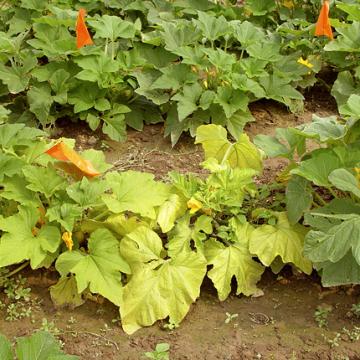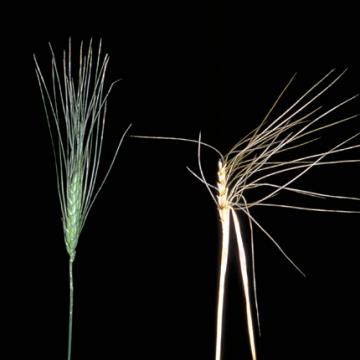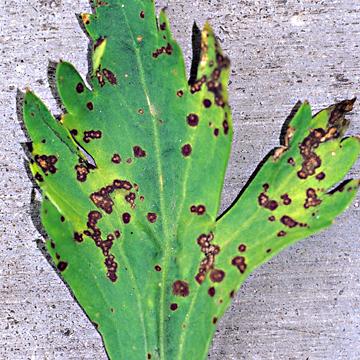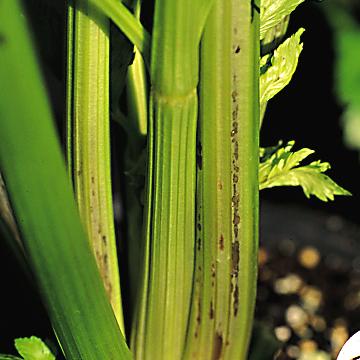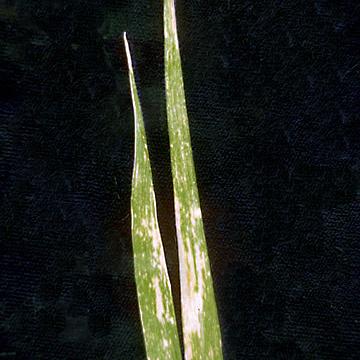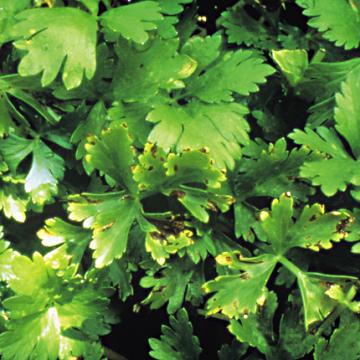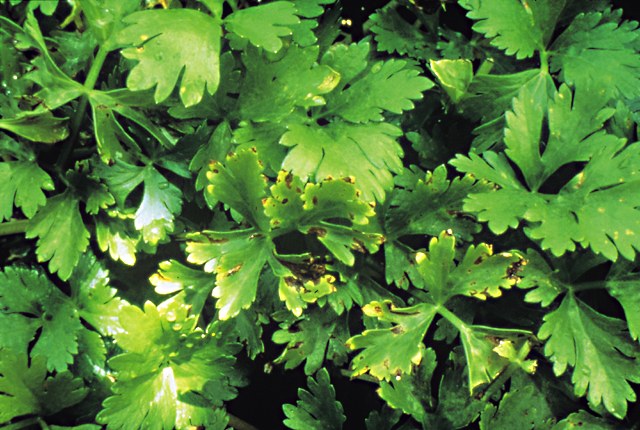DISEASE: Aster yellows
HOST: Squash
Diagnostic characteristics for the disease are yellowing of young leaves, proliferation of secondary shoots, and rigid erect habit. Leaves are misshapen and smaller than normal and have stiff, thick laminae.
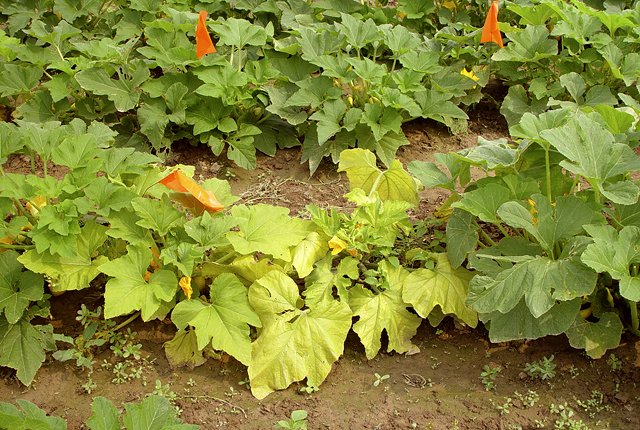
Aster yellows | Squash
DISEASE: Aster yellows
HOST: Squash (Cucurbita sp.)
PATHOGEN: 'Candidatus Phytoplasma asteris'
PATHOGEN SYNONYM: Phytoplasma Aster yellows group
SOURCE: S. Miller
DISEASE: Aster yellows
HOST: Wheat
Healthy head (left) and diseased head (right). Diseased seedlings may die within 2 to 3 weeks. Infected heads of surviving plants are small and sterile, with distorted awns.

Aster yellows | Wheat
DISEASE: Aster yellows
HOST: Wheat (Triticum aestivum)
PATHOGEN: 'Candidatus Phytoplasma asteris'
PATHOGEN SYNONYM: Phytoplasma Aster yellows group
SOURCE: L. N. Chiykowski
DISEASE: Bacterial blight (Brown stem)
HOST: Celery
Lesions are necrotic and circular to angular. Some have yellowish halos. Older lesions become brown and dry.
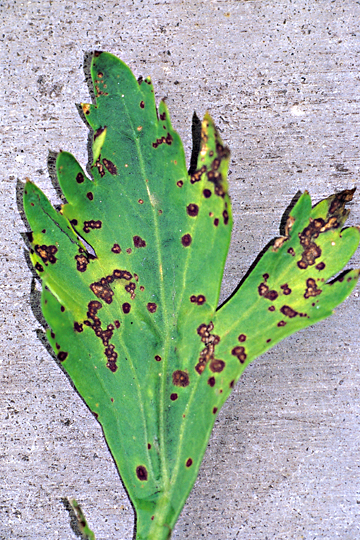
Bacterial blight (Brown stem) | Celery
DISEASE: Bacterial blight (Brown stem)
HOST: Celery (Apium graveolens)
PATHOGEN: Pseudomonas cichorii
SOURCE: R. Raid
DISEASE: Bacterial blight (Brown stem)
HOST: Celery
Ooze from lesion on celery leaf.
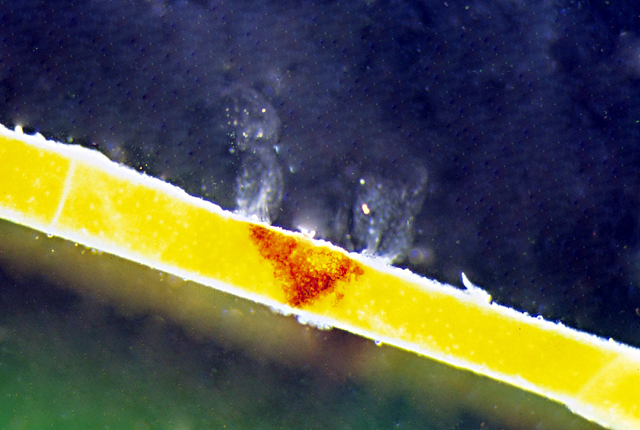
Bacterial blight (Brown stem) | Celery
DISEASE: Bacterial blight (Brown stem)
HOST: Celery (Apium graveolens)
PATHOGEN: Pseudomonas cichorii
SOURCE: R. Raid
DISEASE: Bacterial blight (Brown stem)
HOST: Celery
Characteristic brown discoloration of petioles, which is more evident on inside of petiole close to the crown. Parenchyma tissues are firm and brown.
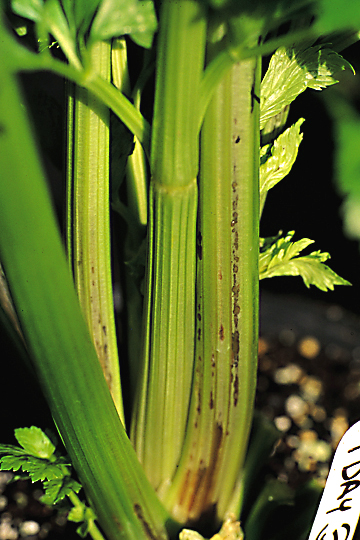
Bacterial blight (Brown stem) | Celery
DISEASE: Bacterial blight (Brown stem)
HOST: Celery (Apium graveolens)
PATHOGEN: Pseudomonas cichorii
SOURCE: K. Pernezny
DISEASE: Bacterial leaf blight
HOST: Wheat
Diseased leaves with whitish blotches. Initial water-soaked spots become necrotic and progress from gray-green to tannish white.
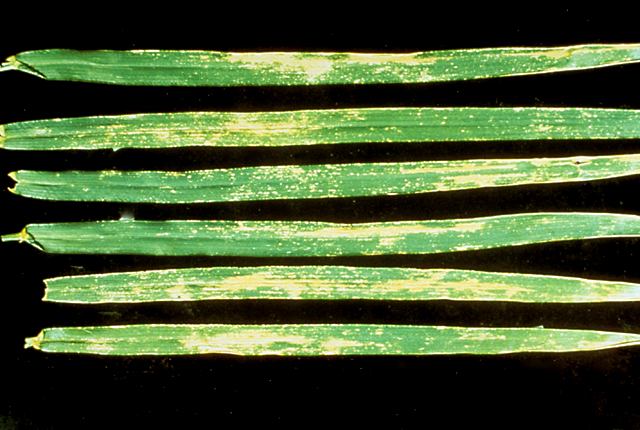
Bacterial leaf blight | Wheat
DISEASE: Bacterial leaf blight
HOST: Wheat (Triticum aestivum)
PATHOGEN: Pseudomonas syringae pv. syringae
SOURCE: J. Otta
DISEASE: Bacterial leaf blight
HOST: Wheat
Diseased leaves with whitish blotches. The disease begins as water-soaked spots and then become necrotic and progresses from gray-green to tannish white.

Bacterial leaf blight | Wheat
DISEASE: Bacterial leaf blight
HOST: Wheat (Triticum aestivum)
PATHOGEN: Pseudomonas syringae pv. syringae
SOURCE: L. Claflin
DISEASE: Bacterial leaf blight
HOST: Wheat
Leaves with reddish tan necrotic lesions.
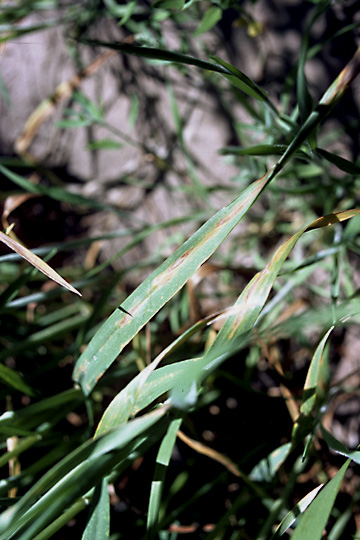
Bacterial leaf blight | Wheat
DISEASE: Bacterial leaf blight
HOST: Wheat (Triticum aestivum)
PATHOGEN: Pseudomonas syringae pv. syringae
SOURCE: L. Claflin


